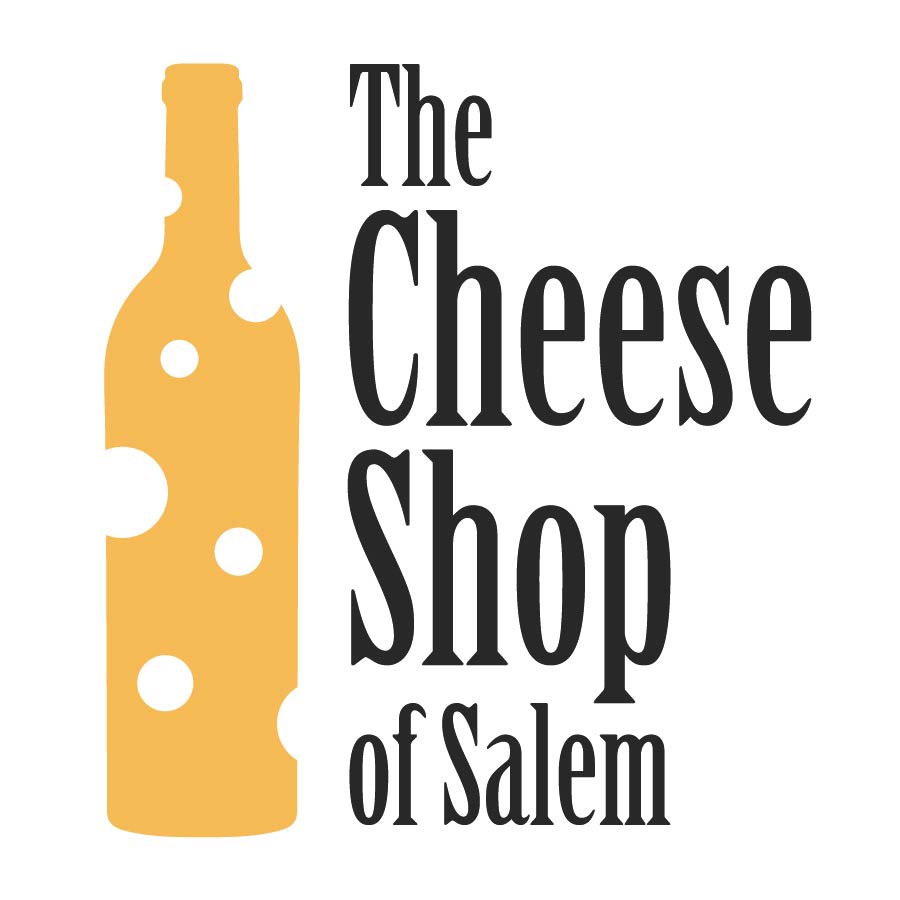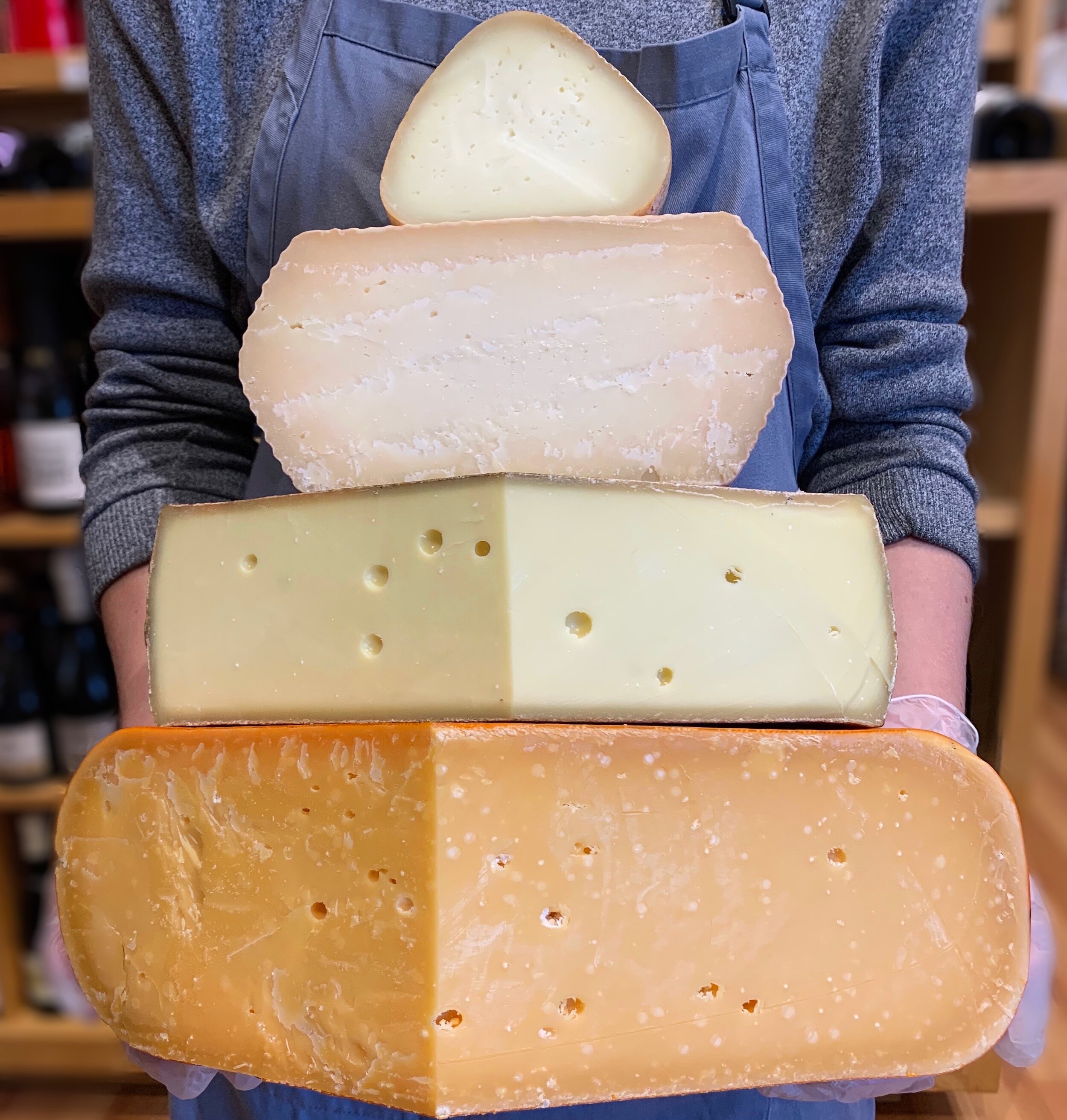Lactose Intolerance – EXPLAINED!
We get a lot of “free” questions on the cheese counter (and these days over the phone) – do we have dairy-free, salt-free, fat-free, lactose-free cheeses? Unfortunately, we can’t help with most of those questions (we love all the salt and all the fat), but lactose-free we can do! Or almost lactose-free because cheese still has a trace amount of lactose that is so small it’s barely measurable. But what does lactose intolerance even look like? Let’s break it down real quick.
Lactose is made up of two simple sugars, glucose and galactose, that have a very specific bond between them. When we ingest lactose, the lactase enzyme in our intestines breaks that bond, making digestion possible. Our lactose intolerant friends don’t produce enough lactase, so the microbes in the gut take a whack at it instead. They break down lactose via fermentation, with byproducts of acid and gas and can make for a very uncomfortable stomach.
Ok, onto that good news I mentioned before. Although lactose and milk go hand in hand, that is not necessarily true for cheese. Cows, sheep, and goats all have similar amounts of lactose in their milks, which I didn’t know until writing this newsletter! Anyway, aged cheeses are a lactose intolerant’s best friend because almost all the lactose is removed from the cheese mere hours into cheesemaking.
Let’s take a closer look at the cheesemaking process to see where all that lactose goes. Pat Polowsky, founder of the Cheese Science Toolkit and explainer of all concepts difficult and benign, has an awesome graph about cheddar production that is a good overview for firm cheeses in general, so I’m going to borrow his insights here. At the beginning of cheddar making, the milk is about 5% lactose. When the starter culture (the first step in coagulating the milk) is added, the bacteria begin to munch on lactose turning into lactic acid. This is good for cheesemaking because acidification affects flavor, curd creation, and helps ward off bad microbes from the cheese. The curds and whey are heated to encourage separation, and those starter culture bacteria keep converting lactose into lactic acid. When the whey is drained away, most of any lactose left drains away with it. Whatever lactose clings to the curds as they are poured into molds and set to age will be eaten by the bacteria, although much more slowly once the curds are salted. Around the third month of aging, lactose has poof! (almost totally) disappeared!
That’s very nice and scientific, but what does this mean practically for the cheeses we have? Wellll, it means, my lactose intolerant buddies, that fresh, high moisture cheeses like Mozzarella and Feta are to be avoided, but there are many, many cheeses at your disposal! Cheddar like Flory’s Truckle, aged gouda like the inimitable L’Amuse Signature Gouda, or classics like Parmigiano Reggiano and its cousin Podda Misto. I can keep going! We’ve got alpine style cheeses like Challerhocker and Hornbacher, which are certainly over three months old, and wonderful sheep’s milk cheeses like Pecorino Marzolino or Su Entu. Looking for goat cheese? Brabander or Garrotxa can fill that gap! So many options!
I do want to add that if someone is allergic to something in milk besides lactose, like the proteins or fats, all of this becomes a lot more complicated. However, if it’s solely lactose that gives you trouble, the world of cheeses is waiting for you! And if dairy has never given you any issues, share this with any lactose intolerant cheese lover you meet and see how happy you make them!
For the love of cheese and lactose-free friendly options,
Kiri
Update: So this week, I emailed organizations that focus on creating more equitable food systems for underserved Black and brown communities on my search for a Black American cheesemaker. One that caught my eye was Black Urban Growers who host a conference every year that brings “together Black farmers, food justice advocates, educators, chefs and concerned members of the Black communities,” according to their website. Since I’ve experienced firsthand how important the American Cheese Society conference is for the cheese world in helping us come together to share ideas and community, I’m sure the participants of the BUGS conference have a similar experience.





![Image [Square] 2.jpg](https://images.squarespace-cdn.com/content/v1/58d5711a9f7456928cbaf420/1593634550531-JH5G958CA8G5C3C74S6Z/Image+%5BSquare%5D+2.jpg)
![Image [Square].JPG](https://images.squarespace-cdn.com/content/v1/58d5711a9f7456928cbaf420/1593634550612-BGSFS0121SQH1IA4DBWJ/Image+%5BSquare%5D.JPG)
